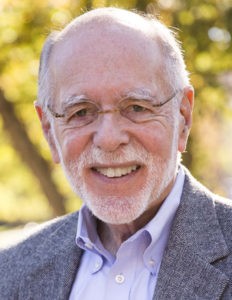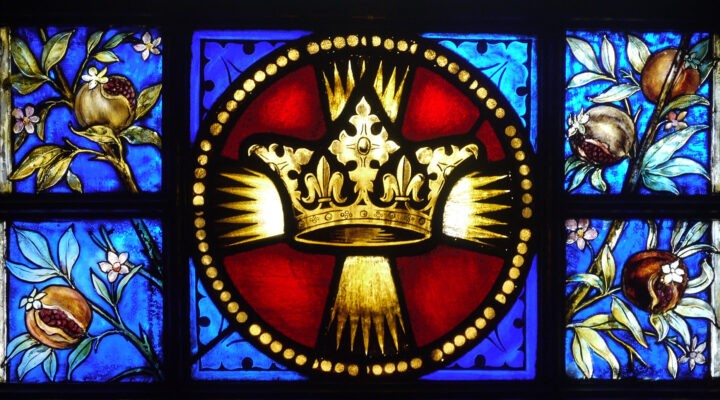It is no small thing to grow up in a religious tradition that claims for itself the title, “the one true church.” To be taught that I alone was right while all my friends were wrong and on the road to eternal perdition was for me a troubling proposition, so troubling, in fact, that it has defined the plotline of my life.
The centerpiece of that bold and audacious claim was what my church described as “the restoration vision”—the attempt to restore in the United States of America the primitive church that existed in the first-century world of Jesus and his Apostles.

Richard T. Hughes
I have spent much of my life trying to make sense of the restoration ideal and, along the way, I have found that it has driven many Christian traditions beside my own.
When I was a graduate student at Abilene Christian College in 1966, one of my professors performed a simple act that transformed my life. He placed a book in my hands and told me to read. The book was Franklin H. Littell’s The Anabaptist View of the Church, and the more I read, the more captivated I became, for this book told the story of a community of Christians in 16th-century Europe, a community very much like my own since they, too, committed themselves to the ideals of the earliest Christians.
But there was a crucial difference between their vision and ours. In our concern to restore the ancient church, we typically focused on forms and structures. We sought to recover the true form of worship, the correct plan of salvation, the right form of baptism, the proper organization of the church. We asked how often the Lord’s Supper should be celebrated — weekly, monthly or yearly, for example — and some of us even asked if we should use one cup or many. To each of these questions, we believed we had found the answer in the biblical text.
Out of the entire Bible, our one special book was the book of Acts, since Acts was the book that most fully revealed what we believed was the pattern for restoring the primitive church.
But now, as I read The Anabaptist View of the Church, I discovered a tradition that also called for the restoration of the most ancient Christian tradition, but that seldom focused on the book of Acts. Instead, these people focused on the Gospels. And they seldom asked the question, “What were the forms and structures of the ancient church that should now be restored?” Instead, they asked, “What does it mean to be a disciple of Jesus — a disciple whose allegiance is to the upside-down kingdom of God?”
As they sought to answer that question, several principles began to emerge. They lived their lives for the sake of others and shared their goods with those in greatest need. They extended love and compassion to all human beings, including their enemies who sought to destroy them. And they refused to take another’s life, even if that person had taken the sword against them. As a badge of their commitment to follow Jesus in all these ways, they embraced the baptism of confessing adult believers.
Soon the whole world turned against them. Catholics and Protestants, princes, priests and reformers — everyone called for their blood and sought to exterminate these gentle people from the face of the earth.
“Slowly I began to see that how we treat others, especially the vulnerable and the dispossessed, was more important in the eyes of God than all the forms and structures in the world.”
When the bloodbath was over, the authorities had executed thousands upon thousands. They drowned them, burned them at the stake and ran them through with the sword. Their crime? They had broken from the state church to be sure, but the authorities found even more offensive their zeal to follow the simple but radical teachings of Jesus — the teachings embodied in the biblical vision of the kingdom of God.
Slowly I began to see that how we treat others, especially the vulnerable and the dispossessed, was more important in the eyes of God than all the forms and structures in the world.
Time and again I have failed in my efforts to respond to Jesus’ call. But this I know — that in my work as a university professor now in the twilight of my life, the upside-down kingdom that Jesus preached shapes what I read and why I read it. It shapes what I teach and how I teach it. And it shapes what I write and how I write it. My failures are many, but my commitment is clear — to allow Jesus’ vision of the kingdom of God to shape and re-shape my life, my vocation and my career.
Richard T. Hughes is a life-long member of Churches of Christ. He now serves as scholar in residence in the Center for Christianity and Scholarship at Lipscomb University in Nashville and author of Christian America and the Kingdom of God and the forthcoming The Grace of Troubling Questions: Vocation, Restoration, and Race.
Related articles:
Is our gospel no longer the gospel of the early church? | Opinion by Bill Rosser
‘The Lapsed’: An ancient church controversy with 2020 implications | Opinion by Bill Leonard
The need to be persecuted | Opinion by Mark Wingfield


